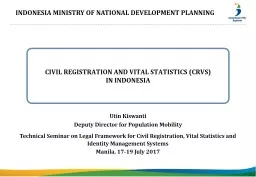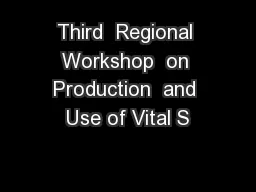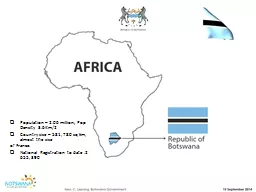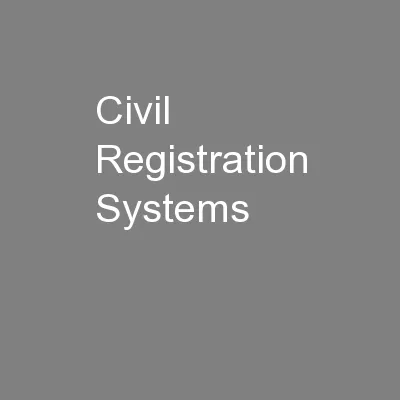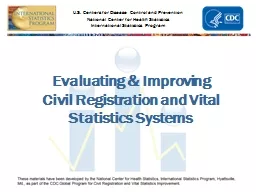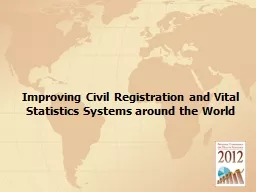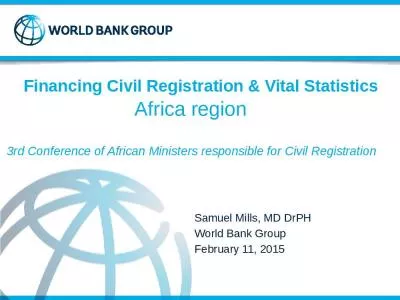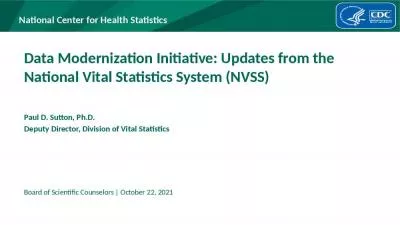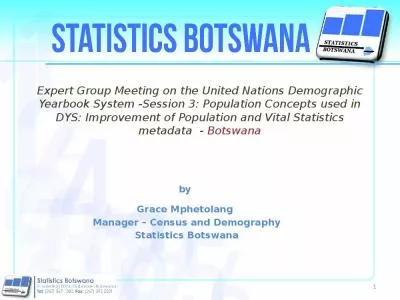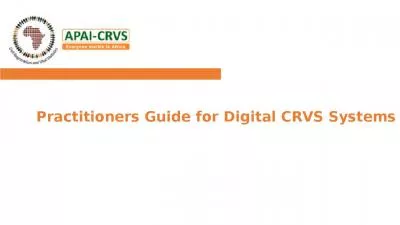PPT-C IVIL REGISTRATION AND VITAL STATISTICS (CRVS)
Author : keywordsgucci | Published Date : 2020-10-22
IN INDONESIA 1 INDONESIA MINISTRY OF NATIONAL DEVELOPMENT PLANNING Utin Kiswanti Deputy Director for Population Mobility T echnical Seminar on Legal Framework
Presentation Embed Code
Download Presentation
Download Presentation The PPT/PDF document "C IVIL REGISTRATION AND VITAL STATISTICS..." is the property of its rightful owner. Permission is granted to download and print the materials on this website for personal, non-commercial use only, and to display it on your personal computer provided you do not modify the materials and that you retain all copyright notices contained in the materials. By downloading content from our website, you accept the terms of this agreement.
C IVIL REGISTRATION AND VITAL STATISTICS (CRVS): Transcript
Download Rules Of Document
"C IVIL REGISTRATION AND VITAL STATISTICS (CRVS)"The content belongs to its owner. You may download and print it for personal use, without modification, and keep all copyright notices. By downloading, you agree to these terms.
Related Documents

